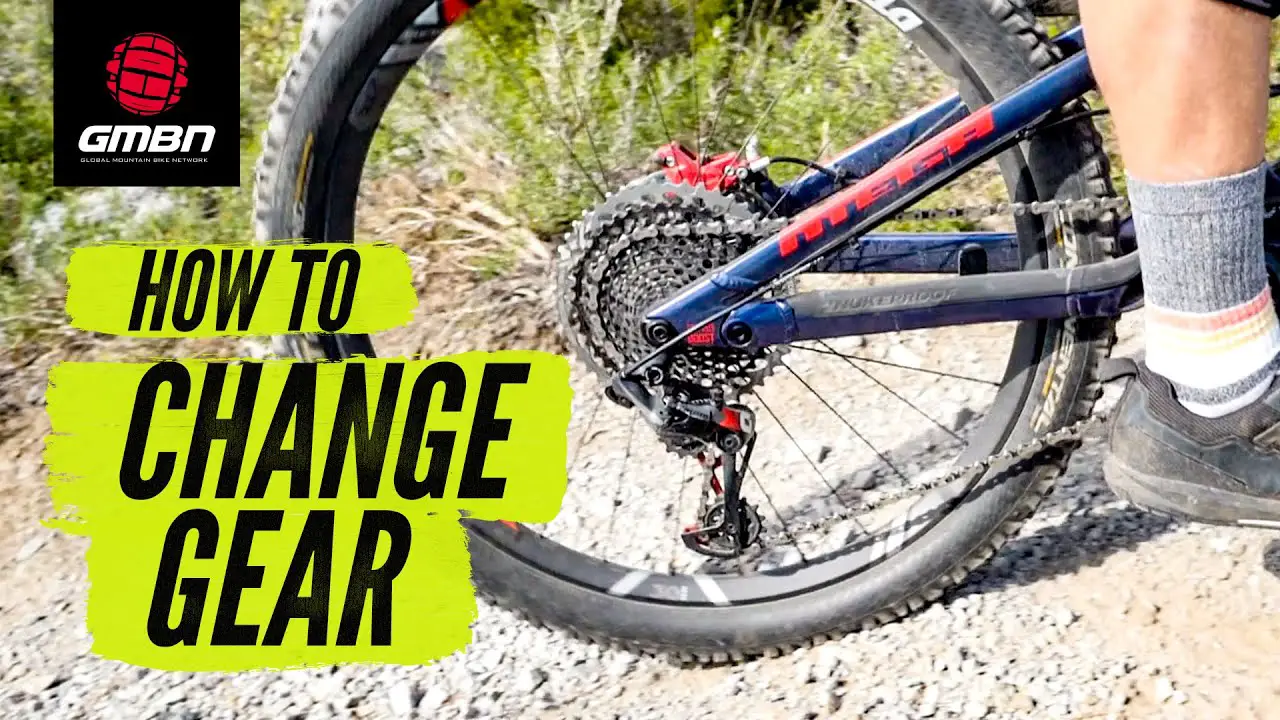To switch gears on a mountain bike, use the right shifter for rear gears and the left for front gears. Shift gears while pedaling smoothly.
Mountain biking offers both excitement and challenges, and knowing how to switch gears efficiently is crucial. Proper gear shifting helps maintain momentum, conserve energy, and tackle various terrains. Using the right shifter allows you to change the rear gears, while the left shifter adjusts the front gears.
Always shift gears while pedaling to ensure a smooth transition and avoid damaging the bike’s components. Mastering gear shifting not only enhances your riding experience but also extends the lifespan of your mountain bike.
Understanding and practicing this skill will make your rides more enjoyable and less strenuous.
Introduction To Gear Switching On Mountain Bikes
Switching gears on a mountain bike is very important. It helps you ride smoothly on different terrains. Mastering gear transitions can make biking fun and easier. Riders can tackle hills and flat paths with ease.
Importance Of Mastering Gear Transitions
Smooth gear transitions help in maintaining bike speed. They also reduce strain on your legs. Proper gear use can save your energy. It also keeps your bike in good condition. Learning to switch gears is essential for safe rides.
Basics Of Mountain Bike Gearing
Mountain bikes have different gears. Higher gears are for flat or downhill rides. Lower gears help in climbing hills. Shifting gears should be done before the terrain changes. Always pedal smoothly while switching gears. This helps in avoiding chain issues.
Anatomy Of A Mountain Bike Drivetrain
The gear system on a mountain bike includes several key parts. The derailleurs help move the chain between gears. Shifters on the handlebars let you control the derailleurs. Cassettes are the cluster of gears on the rear wheel. The chainrings are the gears attached to the pedals. Chains link the chainrings and the cassette. Cables connect the shifters to the derailleurs.
Pedals power the chainrings, moving the chain. This action shifts the bike into different gears. Proper maintenance of these parts is important. Regular cleaning ensures smooth gear changes.
Gears make it easier to ride on different terrains. Lower gears are ideal for climbing hills. Higher gears let you go faster on flat surfaces. Shifting gears helps manage energy and effort. Smooth shifting avoids damage to the gear system.
Learning to shift gears properly improves riding experience. Practice on different terrains builds confidence. Always use the right gear for the right situation.
Preparing For Gear Shifting
Mastering gear shifting on a mountain bike ensures smoother rides. Anticipate terrain changes and shift before inclines or descents. Always pedal lightly while changing gears to avoid strain on the chain.
Pre-ride Checks
Check your bike before you ride. Ensure the tires are properly inflated. Inspect the chain for any rust or dirt. Make sure the brakes are working well. Check the gear cables for any damage. Test your shifter to ensure it moves smoothly. If anything looks wrong, fix it before you ride. A quick check can prevent problems on the trail.
Understanding Your Shifter
Shifters are the controls for your gears. They are usually on the handlebars. There are two types: trigger shifters and grip shifters. Trigger shifters use levers you push with your fingers. Grip shifters twist around the handlebar.
Know which type you have. Practice shifting gears while stationary. This helps you get used to the movement. Understanding your shifter will make your ride smoother.
Techniques For Smooth Gear Shifting
Shift gears before you need to. Anticipate changes in terrain. Switch to an easier gear before climbing a hill. Change to a harder gear before descending. Keep your pedaling steady while shifting. This helps the bike change gears smoothly.
Lighten your pedal pressure when shifting gears. This reduces strain on the bike’s chain. Keep pedaling but with less force. This makes gear changes smoother and faster. Avoid shifting under heavy load. It can damage the bike and make shifting difficult.
Shifting Gears Uphill
Shift gears before the hill starts. This makes pedaling easier. Avoid shifting under pressure. Keep a steady pace. Your bike will respond better. Listen to your bike’s sounds. Grinding noises mean the gear isn’t right. Practice makes perfect. With time, you’ll get better.
Keep your speed steady while climbing. Shift to lower gears as needed. This helps you maintain momentum. Pedal smoothly to avoid stalling. Stand up if you need more power. This uses more energy but helps climb faster. Look ahead to plan your gear shifts.
Navigating Downhill Shifts
Always use lower gears to go downhill. This helps you control speed better. Lower gears give you more control over your bike. You can brake less and keep steady. Your bike will move smoothly and safely.
Practice shifting gears before going downhill. This makes you more comfortable with the bike. Shift gears slowly and smoothly. Your bike will respond better and you will feel more confident. Avoid sudden shifts which can make you lose control.
Always look ahead and see the terrain. This helps you choose the right gear. Anticipate changes in the path. Shift gears before you reach a steep slope. This keeps you ready for any change.
Stay alert and listen to your bike. It will tell you if you need to shift gears. Adjust your gears as the terrain changes. This makes your ride smooth and safe.
Common Shifting Challenges And Solutions
Gear skipping can be frustrating. Check if the chain is clean and well-lubricated. Dirt can cause the chain to skip. Inspect the cassette and chainring for wear. Worn teeth can also lead to skipping. Ensure the derailleur hanger is straight. A bent hanger affects shifting performance. Adjust the derailleur tension if needed. Proper tension ensures smooth gear changes.
Start by setting the high and low limit screws. These screws prevent the chain from falling off. Next, fine-tune the barrel adjuster. This helps in precise shifting. Check the alignment of the derailleur with the gears. Misalignment can cause poor shifting. Lubricate the derailleur to keep it moving freely. Proper lubrication ensures smooth operation.

Credit: www.singletracks.com
Advanced Gear Shifting Techniques
Cadence is the speed at which you pedal. Maintaining a steady cadence helps improve efficiency. Aim to keep your cadence between 70-90 RPM. This range is ideal for most riders. Gear shifting can help you maintain this cadence. Shift to a lower gear on steep climbs. Use a higher gear on downhills. This will keep your cadence steady.
Anticipate terrain changes to shift gears smoothly. Always shift before the terrain changes. Practice shifting on different terrains. This will make you a better rider. Avoid cross-chaining. This means not using the smallest chainring with the smallest cog. Learn to shift under load. This is important for competitive riding. Use both front and rear derailleurs effectively. This can give you more gear options.
Maintenance Tips For Optimal Gear Performance
Regular cleaning keeps your bike gears in top shape. Dirt and grime can cause problems. Use a soft brush and soapy water. Clean around the gears and chain. Lubrication is also very important. Apply bike-specific lubricant to the chain. Wipe off any excess oil.
Seek professional help if gears are still not working well. Visit a bike shop for a tune-up. Professionals can adjust the gears perfectly. They can also check for any worn-out parts. Regular check-ups keep your bike running smoothly.

Credit: www.singletracks.com
Conclusion: Enhancing Your Ride With Proper Shifting
Mastering proper gear shifting on a mountain bike enhances your riding experience and efficiency. Smooth transitions between gears can make challenging terrains more manageable and enjoyable.
Recap Of Key Takeaways
Shifting gears smoothly can make your ride easier. Remember to shift before you need to. Use your right hand for small changes. Use your left hand for big changes. Always pedal when you shift. Avoid cross-chaining to keep your bike in good shape.
Encouragement To Practice
Practice makes perfect. Take your bike to a safe place. Try shifting through all the gears. Get to know your bike. The more you practice, the better you will get. Soon, shifting will be second nature. Enjoy your ride and happy biking!

Credit: m.youtube.com
Frequently Asked Questions
When Should You Switch Gears On A Mountain Bike?
Switch gears on a mountain bike when the terrain changes. Shift to lower gears on climbs and higher gears on descents.
What Is The Proper Way To Shift Gears On A Bicycle?
Shift gears while pedaling smoothly. Anticipate terrain changes. Use the right shifter for rear gears, left for front gears. Avoid cross-chaining. Practice for better timing.
What Gears To Use On A Mountain Bike?
Use low gears for climbing hills and steep terrain. Shift to higher gears for flat surfaces and downhill riding. Proper gear usage maximizes efficiency and performance on varying terrains.
Which Gear Is 1 On A Bike?
Gear 1 on a bike is the lowest gear. It provides the easiest pedaling resistance, ideal for climbing hills or starting from a stop.
How Do You Shift Gears On A Mountain Bike?
To shift gears, use the shifters on the handlebars. Right shifter controls rear gears, left controls front gears.
Conclusion
Mastering gear switching on a mountain bike enhances your riding experience. Practice regularly to improve your skills.
Understand your bike’s gear system and anticipate terrain changes. This ensures a smoother ride and better control. Enjoy your mountain biking adventures with confidence and ease.
Happy trails!

Steven is a professional cyclist and his passion is cycling. He has been cycling for the last 6 years and he loves using bikes while outing as well. Based on his experiences with the different types of bikes; he is sharing his opinions about various bikes so that a beginner can start right away. Find him on Twitter @thecyclistguy Happy Biking.


Leave a Reply